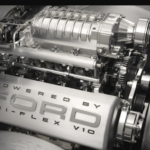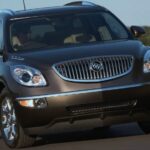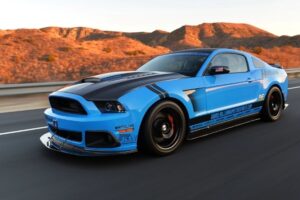Some Ford enthusiasts consider the Bullnose Ford as the last of the ‘classic trucks’ because it had special features like glass headlights. As it reached classic car status, it became popular among restorers. This article will discuss Bullnose Ford years, specs, and review.
Ford Motor Company manufactured the Bullnose Fords from 1980 to 1986. These non-commercial grade trucks were popularly called “Bullnose” because of the characteristic shape of their front end. This is a Ford F-Series truck that belonged to its 7th generation.
The Bullnose Ford underwent many improvements during its production years from 1980 to 1986 in some of its features and engine capacity. But the rounded shape of their noses remained unchanged. That’s why they are still known today as Bullnose Ford.
Read on to learn more about the Bullnose Ford, its production years, its specs, and some reviews of this truck.
Bullnose Ford Years

Ford Motor Company manufactured the Bullnose Ford from 1980 to 1986. It was called “Bullnose” because of the distinctive rounded shape of its nose. This is a non-commercial grade truck that many Ford enthusiasts consider the last classic track of this type of design.
The Bullnose Ford belonged to the 7th generation of the Ford F Series trucks. During its production years, this truck underwent many improvements in its specs and features. But one thing has remained – the rounded shape of its nose.
It is now popular among truck restorers looking for trucks with classic shapes. Since it was manufactured in the 1980s, this truck has no complicated wirings and computer features that make it easy to repair when it encounters a problem.
Its major parts are a motor, an injection pump, and a turbo. There is no ECU, computer sensors, and all that complex stuff that is hard to fix when they break down. The Bullnose Ford is a truck you can drive without worrying about complicated setups.
What Is a Ford Bullnose?
The Bullnose Ford is a non-commercial truck manufactured by Ford from 1980 to 1986. Their name carried the “Bullnose” moniker because of the distinctive nose shape of their front ends.
Looking at the front of a Bullnose Ford closely, you will notice that its nose at the top is jutting out farther than the bottom. This makes the front end of the truck look like a nose.
This physical feature contrasts with other Ford truck models of the previous production models, the Dentside from 1973 to 1979 and the Brickstone produced from 1987 to 1991.
Three Ford trucks have this Bullnose shape – the Ford F-150, the Ford F-250, the Bronco, or the Ford F-350. All these Ford trucks have the same headlight configurations and grill designs.
However, the Bullnose Fords manufactured in the earlier years have no Ford emblem on their grilles. Instead, the word “FORD” in chrome is attached to the truck’s hood.
Bullnose Ford Model Years
There are seven consecutive model years of the Bullnose Ford, starting from model 1980 and ending with model 1986.
To better understand the distinction between the production years of this truck, you should know some interesting details about each of them. Here are their noteworthy details:
1. 1980
The instrument wiring of this Bullnose Ford was different from the wiring of previous Ford trucks. In the 1980 model, the printed circuit is green. It was also wired differently than the modes of 1981 to 1986, which used a red PCB.
2. 1981
The 1981 Bullnose Ford has turn signals that have amber colors. Model 1980 has clear turn signals but amber bulbs. But Norfolk and Twin Cities retained clear lenses for their 1981 models.
Only two of all 7 Ford plants in North America used clear lenses. However, these two plants eventually stopped using clear turn signals by September and October of 1981. The door locks of the 1980 Bullnose Ford are slide-type.
The succeeding catalogs say this type of door lock was unavailable for the 1981 model. But some say that this time was not very accurate. It was near March 1981 when the lock style was changed, but not in all trucks.
Their records show that Twin Cities still used slide lock for their Bullnose Fords as late as July of 1981, and Kansas City still manufactured these trucks in March of 1981 but eventually switched to pins around April of 1981.
3. 1982
The air conditioning system of the Bullnose Ford changed to the round FS6 compressor. It replaced the twin-piston Tecumseh or York compressor.
The hose that starts from the compressor to the evaporator was also channeled back to the firewall and across it instead of being angled across the engine as it was installed before.
Additionally, the Swiss cheese frame of the 1980 and 1981 model years was changed to a solid frame. The simple egg crate of the Last Great Grille (LGG) was also changed to a Ford emblem in the center.
4. 1983
There were several changes done to the 1983 Bullnose Ford. They include the following:
- The 265 horsepower 400 engine of the 1983 model was replaced by a much bigger 575 horsepower of 460 engine.
- The tailgate straps were changed into cables. This made the 1983 Bullnose Ford one less hole (on each side) than the previous model.
- Hydraulic clutch linkage was introduced for the models F250 and F350 for two new engines, the 460 and the diesel engine.
- The tailgate strikers were changed from open loops to rubber bonded to the coils.
- The screws that hold the strikers were replaced from Phillips to Torx screws.
5. 1984
There were also some changes and improvements done to the 1984 Bullnose Ford. The manual transmissions of all Bullnose Ford trucks were fitted with hydraulic clutch linkages. The hot-fuel handling system was also added to the 460 engines to prevent vapor lock.
The 351HO with high-performance engine parts such as a hotter cam, a DS-II ignition, and a Da Holley 4bbl was also introduced in this model year.
6. 1985
For the 1985 Bullnose Ford, the car manufacturer also made some changes and improvements. They included the following:
- The body trim of the early 1985 Bullnose Ford was changed. It had an upper body trim that looked like it had been used on just a few trucks in early 1985. Ford seemed to have discontinued this trim style for the late 1985 models. It also appeared that the latest this trim style was used was in the Ontario Ford plant in May of 1985.
- The coolant recovery bottle was also replaced with a hose connected to a fitting in the bottom instead of the previous hose being inserted by an opening at the top.
7. 1986
The style of the wiring colors was slightly changed in the 1986 Bullnose Ford. Previously in 1985, the wiring used dots and hash marks. It seemed that stripes replaced the dots and hash marks, although the overall colors of the 1985 Bullnose model were retained in the 1986 model.
Key Engine Specs of Bullnose Ford

If you are interested in a Bullnose Ford, you need to know its key specs. Its specs will show you how capable this truck is in terms of its engine and some of its key components.
The table below lists all the key engine specs of the different model years of the Bullnose Ford:
| Code | Model Year | Fuel | Cylinders | Displacement | Liters | Type |
| A | 1983 | G | 4 | 140 cubic inch | 2.3 | EFI |
| C | 1983/88 | G | 4 | 122 cubic inch | 2.0 | |
| D | 1981/82 | G | 8 | 255 | 4.2 | 2/B |
| D | 1985 | CNG | 4 | 140 | 2.3 | |
| E | 1980/82 1985/87 | GD | 6 4 | 300 140 | 4.9 2.3 | 1B/LD Turbo/Mitsubishi |
| F | 1980/85 | G | 8 | 302 | 5.0 | 2/B |
| G | 1980/85/87 | G | 8 | 351/ 460 | 5.8/ 7.8 | 2/B EFI |
| H | 1985 | G | 8 | 351 W | 5.8 | 4B/EFI |
| L | 1980/87 | G | 8 | 460 | 7.5 | 4/B |
| M* | 1983/85 | D | 4 | 226 | 3.7 | White Engine |
| M | 1988 | D | B | 446 | ||
| N | 1985 | G | 8 | 302 | 5.0 | EFI |
| P | 1983/84 | D | 4 | 134 cubic inch | 2.2 liters | Toyo Kogyo |
| S | 1983/86 | G | 6 | 171 | 2.8 | |
| T | 1986 | G | 6 | 177 | 2.9 | EFI |
| U | 1986 | G | 6 | 183 | 3.0 | EFI |
| V | 1988 | D | 6 | 210 | 3.4 | |
| W | 1988 | G | 8 | 361 | 5.8 | 2/B |
| Y | 1983 | G | 6 | 300 | 4.9 | EFI (n/a until 1987) |
| Z | 1983/82 1985 | G G | 8 – | 400 140 | 6.6 2.3 | 2/B Brazil |
| O | 1980 | D.S.O. | ||||
| 1 | 1983/87 | D | 8 | 420 | 6/9 | I.H. (Diesel) |
| 3 | 1983 | G | 6 | 230 | 3.8 | |
| 7 | 1980/81 | G | 8 | 351 | 5.8 | 2/B Export Low Compression-D.S.O. |
| 9 | 1982 | G | 6 | 300 | 4.9 | 2/B LPG Conversion |
Again, what is a Ford bullnose? Ford made the Ford bullnose, a non-commercial grade truck from 1980-1986. The name bullnose is due to the truck’s distinct shape.
Short History of the Bullnose Ford
Ford modernized the platform of the F-150 pickup starting in 1980. In the previous 15 years of this pickup truck model, the F-150 has used the chassis that the carmaker designed in the 1960s.
In modernizing the F-150 platform, Ford aims to continue its advantages over its competitors GMC and Chevrolet, as well as Dodge, to a lesser extent. By upgrading some aspects of its design, Ford tried to continue its dominance in the pickup market.
The result is the Bullnose Ford, the F-150’s seventh generation. Its modernized design has set the style for the next 10 and 1/2 years of Ford pickup truck production.
Bullnose Ford Review
Here are some reviews of the Bullnose Ford that will show you if it’s worthy of consideration:
1. Lighter Trucks with Better Built
Ford designed this Bullnose in response to the clamor of pickup truck buyers for lighter pickups that do not fuel hungry as its previous models.
Fuel prices kept on increasing during the time this was going on. To answer this need, Ford engineers designed a more fuel-efficient F-150 with a better build than the previous models.
Ford engineers downsized the pickup’s frontal area and streamlined its hood and sides to reduce its weight and, therefore, its fuel requirements. This reduced its total weight and improved the airflow, reducing fuel consumption.
2. Sleek Style
The popular cab was initially given an extended cab version. In 1983, Ford built the four-door crew cab of the Bullnose Ford. After 1982, its styling was improved. Full carpeting, door locks, and power windows were made available.
While its interior appointments are far from the modern accessories of pickups today, this Bullnose Ford was easier and more comfortable to live in. It left very little lacking regarding its features compared to Ford’s other cars and pickups of that time.
3. Big Improvement in Suspension and Engine Design
The most significant improvement that Ford has accomplished in the F-150 or Bullnose Ford is the launch of the “Twin-Traction Beam” front suspension, which replaced the previous generation. The F-150 4x4s now have better drive handling on the highway.
It’s unclear whether a lowered Bullnose Ford is equipped with this type of suspension or even a lifted Bullnose Ford.
The engine was also fitted with a powerful 300 cubic inch straight engine with six cylinders. This large-sized engine provided power ranging from 115 to 153 horsepower and torque that ranged from 260 to 300 lb.-ft.

This topic may have sparked some questions in your mind. If you continue reading the article, you may be able to get the answers that you are looking for below.
The Bullnose Ford is a non-commercial grade Ford F-150 pickup truck that Ford Motor Co. manufactured from 1980 to 1986. It was the 7th generation of the Ford F-series.
The Bullnose Ford was called this way because of the shape of its front end or its nose at its front part. If you will look at it closely, the form of the front part of this pickup truck is similar to a nose. Its front top part protrudes out farther than its bottom.
There are three classes of Ford trucks that have bullnose noses. They are the Ford F-150, the Ford F-250, and the Bronco, or the Ford F-350. These three Ford pickup trucks also have the same designs for their grills and the same configurations as their headlights.
In Closing
Ford Motor Company manufactured the Bullnose Fords from 1980 to 1986. These are pickup trucks of non-commercial grade.
People call them “Bullnose” because of the shape of their noses at the front end, which is basically like a nose. This pickup truck belonged to the 7th generation of the Ford F-Series.







![Read more about the article Ford V10 Life Expectancy [How Many Miles Will It Last?]](https://roadsumo.com/wp-content/uploads/2021/06/ford-v10-life-expectancy-300x200.jpg)
![Read more about the article Ford Truck Models – All the Different Types [Full List]](https://roadsumo.com/wp-content/uploads/2020/09/what-ford-truck-models-are-popular-300x200.jpg)
